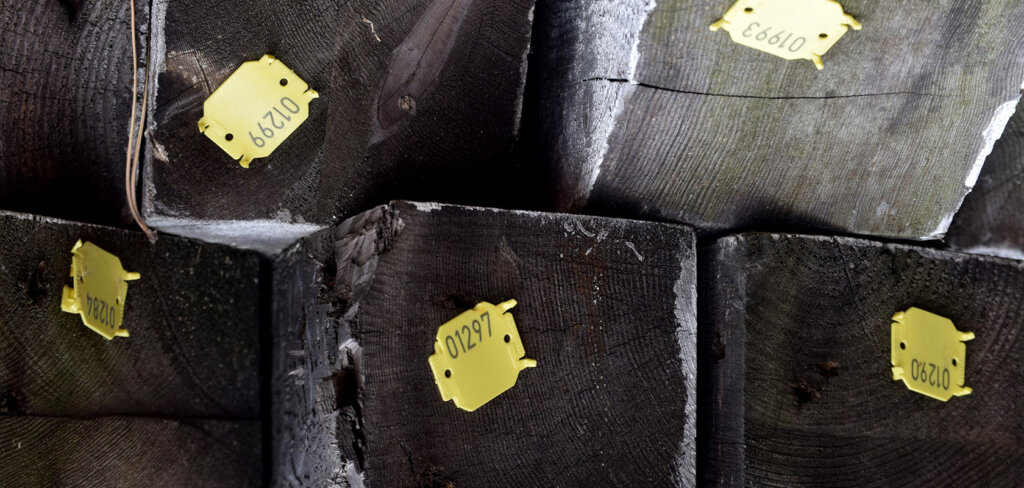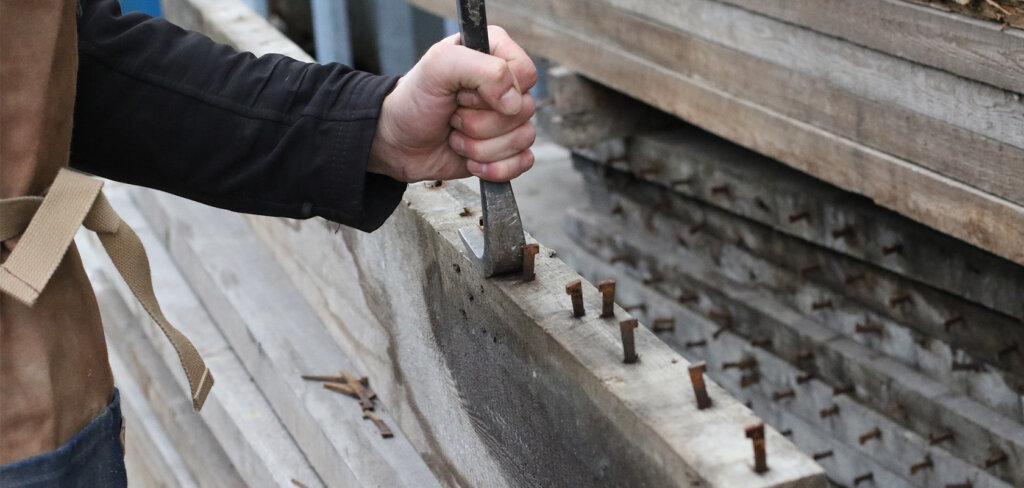Demolition is a key stage in reclaiming fabulous old woods. It’s at this stage the wood has ceased the latest chapter in its life, being ready to write the next at the hands of its new custodians.
However, the demolition process doesn’t always occur this smoothly, and in reality a tremendous amount of wood and other material is often wasted due to challenging regulations and a lack of forward thinking around demolition and reclamation.
But why is this the case? And how can this process be improved in the future to lead to a greener planet?
The current state of demolition and reclamation
Presently, people don’t always know the value of what they have within a demolition site. These sites are often treasure troves of unique and wonderful material, but due to a lack of knowledge on the subject, valuable and interesting wood and other materials can be lost forever.
In fact, in 2018 the US EPA (United States Environmental Protection Agency) reported that landfills received 12.2 million tonnes of wood whilst only 3.1 million tonnes of wood were recycled in the same year.
This is just 20.38% of the volume, and the signs of improving these figures year on year look slim. Thankfully wood is biodegradable even in these situations, but it should be of great concern that we’re still recording this imbalanced ratio of wastage to recycling. In fact, Hughes and Salvidge estimate that 95% of all demolition waste could actually be recycled with more efficient waste management, with toxic and dangerous materials (such as asbestos) being the only outliers.
Wood pallets make up a significant portion of this wastage, but it is a regular occurrence that valuable woods such as Douglas Fir and Pitch Pine are destroyed without even a second thought.
Woodworks have been lucky enough to reclaim woods from former hospitals, mills, South Asian homes, historical buildings and more, but there are real regulatory difficulties in acquiring these timbers at times.
We recently spoke to Eddie Heathcote, design critic for the Financial Times on this topic, and when discussing the insatiable need for more and more new property without considering what is lost during the demolition process he said, “It’s not just legislation regulation that doesn’t help, it’s that it actually obstructs reuse. There is VAT applicable to restoration and conservation and no VAT to new build. Regulation and legislation need to be looked at very seriously and the house building industry needs to be looked at too because it’s unsustainable at the moment in this country.”
And he also touched on how unsustainable constant demolishing without recycling and reuse truly is, saying, “The biggest [concern] is not to build new buildings. The worst thing you could do in design is to demolish a 10-storey concrete tower to build a 20-storey concrete tower. That’s not really sustainable because all that embodied energy is going to take centuries to compensate for.”
Before we even consider the noise pollution effects and the general obstruction to everyday life a demolition brings, there are huge environmental shortcomings. The construction industry produces approximately one third of the world’s solid waste (by weight) and 40% of raw materials extracted from the Earth go into the same industry, but via reclamation that need not be the case.
Safe to say, if we continue down this path, both from a designer and governmental point of view, we’re going to hit an impasse soon, all the while at a significant cost to our planet.

How do we all help by reclaiming and recycling?
Eddie Heathcote again made another poignant point on this front, saying, “From an architectural point of view the most tangible thing we can do is look seriously at reuse.”
By taking into account the demolition process when creating new projects, we can help to salvage much more material from old buildings – this means less wood (and other substances) goes to landfill. At this stage it is returned to the innovation stage, and often transformed into something that celebrates its history whilst maximising its eco-credentials.
Our War Office Pine, saved as part of the renovation of the iconic landmark in Whitehall, is a prime example of this. Rather than be wasted and sent to decompose, we took custody of the boards and transformed them into modern engineered planks which continues the storied history of the timber.
Moreover, by avoiding complete demolition and reusing as many materials as possible from a previous project, we are able to vastly reduce our carbon footprint.
Upcycling
Much less machinery, pollutive gasses and wastage is required if you are able to upcycle many elements of the same site, leading to carbon neutrality for your project. This is especially easy with wood, given how it continually locks in carbon through its lifecycle; depending on the species, 1kg of wood can store between 1.65 and 1.85Kg of harmful CO2, meaning the longer you use your reclaimed wood, the more thankful our environment is.
Reclaiming
Reclaiming any wood for future use from demolition sites also helps reduce deforestation. Less new product equals less need for felling trees, and a much happier planet overall. This in particular is just one advantage of using reclaimed wood, and you’ll find more reasons in our guide to reclaimed and recycled wood flooring.
Cost effective
Lastly, and more personally, just think of the financial savings of using wood taken from the demolition site rather than having to fork out for something entirely new. At a very simple level, this is a reason why pallet furniture has taken such a hold on consumer projects, but at commercial level, it allows us to maintain history and heritage of a building by cleverly upcycling the materials.
There are a lot of key stages in transforming reclaimed wood into a floor ready to stand the test of time, including kiln drying, engineering for modern life and correctly finishing, but reclaiming the material from the remnants of a former building is a great place to start.

What more can be done?
Ultimately, the demolition process is heavily hindered by tight regulation and financial confusion. More action needs to be taken at this governing level in order to help not only reduce wastage at present, but to protect the future of our planet by helping reduce the volume of wood (and other reusable materials) from going to landfill every year.
When designing and innovating, we can look to use an increased number of reclaimed materials, which we plan to use for 20% of our overall sales over the next few years. By doing so, can all help to keep carbon locked into our projects and continue the lifecycle of the most hardwearing natural material the planet has to offer.
Personal responsibilities
Then there’s personal consideration too. At a very simple level, we can all take many little steps to reduce the number of ‘new’ products we have to use. Rather than buy a bottle of water per day, we should all invest in a reusable one and the same can be said of coffee cups and food bags amongst many other everyday items.
So whilst changes to the demolition process (both in terms of regulation and understanding) are required, we can all make small and significant changes to our everyday designing and lifestyles in order to improve our personal sustainability too.
For more on reclaimed wood flooring and sustainability, visit our reclaimed sustainability hub, and you can view all of our reclaimed wood flooring below.